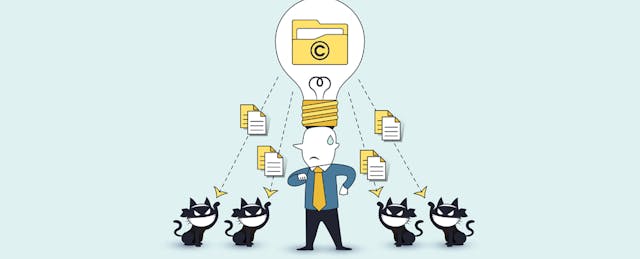Does the Internet encourage plagiarism? It’s certainly not a stretch to imagine a harried student copying and pasting from Wikipedia, Quora or any one of the countless number of information resources and term paper databases.
But a study published in the Journal of Academic Ethics suggests otherwise, finding that instances of academic plagiarism actually decreased.
In his study, David Ison, a professor at Embry-Riddle Aeronautical University, compared 184 dissertations from doctoral programs in English literature written before 1994 with 184 written after 2010—basically, before and after widespread Internet use. Using Turnitin, an anti-plagiarism software adopted by thousands of schools across the globe, Ison found that overall instances of plagiarism actually decreased from 14.5 percent to 12.3 percent.
Have students suddenly become more honest or original in their writing? Not quite: Ison notes that notes that flagrant and extreme examples of plagiarism, such as outright copying of full paragraphs of text, are more common today than they were pre-Internet.
His choice of measurement tool is likely to raise eyebrows. Turnitin is not without controversy. While the tool may be the most recognizable name in the plagiarism detection business, Harvard, Princeton, Yale, Stanford, and the University of Texas at Austin have all declined to use the service.
Susan Schorn, a Senior Program Coordinator and Curriculum Specialist for Writing at the University of Texas at Austin, has consistently voiced concerns after finding that Turnitin failed to detect a great deal of plagiarism.
“We’re paying instructors less...but we’re able to find money for this policing tool that doesn’t actually work. It’s just another measure of false security, like having people take off their shoes at the airport,” Schorn recently told Inside Higher Ed. She is the author of two parallel studies into Turnitin’s accuracy conducted in 2007 and 2015.
Her initial study swayed the university away from using the software because it found that Turnitin did not catch 44 percent of plagiarised text. (By comparison, Schorn found that Blackboard’s SafeAssign, which the University currently uses, missed 56 percent of plagiarised material.) Schorn also concluded that a Google search for strings of nouns from the essays—a manual approach—unearthed 91 percent of stolen text. Schorn’s 2015 test, completed this March, found that Turnitin missed 39 percent of plagiarism and only partially identified 16 percent—not a marked improvement.
Schorn’s studies add fuel to criticisms from other educators over the software’s tendency to dispense false positives for jargon and course terms. Professors at Texas Tech found that the service flags common phrases such as “global warming” and other terms that appeared in every paper for a class’s assignment. They also found that Turnitin at times mistakenly identifies the sources of plagiarised material, which makes it difficult for educators to confront students about their sources.
Turnitin defends its effectiveness with its own research: in two large-scale evaluations of its database and use, the company claims it found that plagiarism decreased by 39 percent in universities and 33 percent in high schools using the service.
Schorn’s studies raise fair questions about Ison’s findings, which may have missed a significant portion of the material it was looking for.
But while Turnitin may not catch every guilty instance, the existence of the tool has raised awareness among students, educators and researchers about what constitutes plagiarized content. Ison notes that only 30 papers on Internet-related plagiarism existed in 1994. By 2014, that number ballooned to 3,210. His recent study, he hopes, will “provide educators and the media with relevant empirical evidence to guide discussions and policies about plagiarism in academia.”
These conversations ought to start with students, whose attitudes about plagiarism are shifting.
In another recent study in the Journal of Academic Ethics, researchers sent thousands of questionnaires to students at a small private university and a large public one asking them to rate the acceptability of plagiarism for specific reasons, such as copying homework. Across the board, the study claims, student acceptance of academic dishonesty has decreased during the past nine years.
So what counts as plagiarism these days? A 2013 report from the Impact of Policies for Plagiarism in Higher Education across Europe project that found that 40 percent of European students were unsure about what constitutes plagiarism. Students identified direct copying as plagiarism, but not reworded ideas without attribution.
Plagiarism may indeed be on the decline. But without a shared understanding of its definition, it can be hard to ascertain the validity of studies like Ison’s. In the absence of clear expectations, students may be writing their own honor codes.


